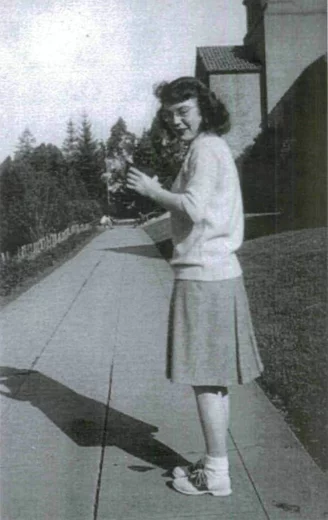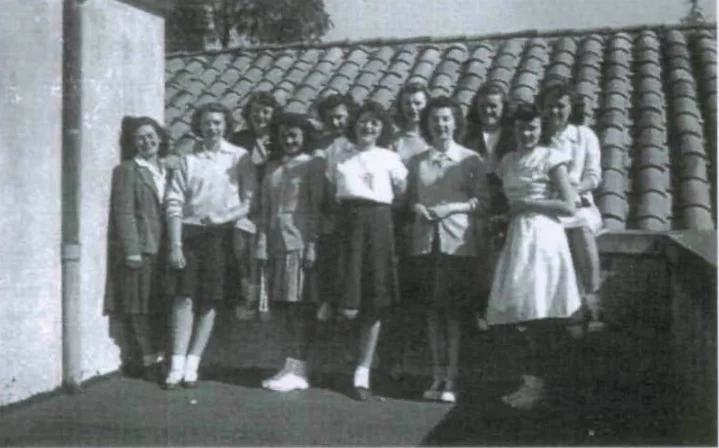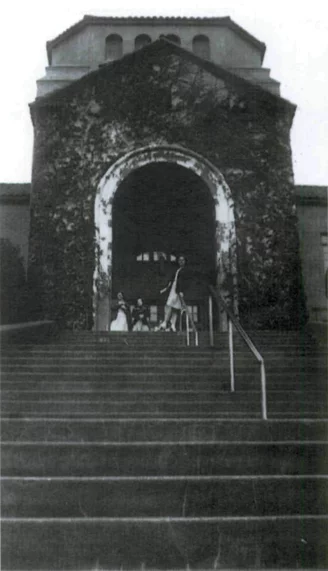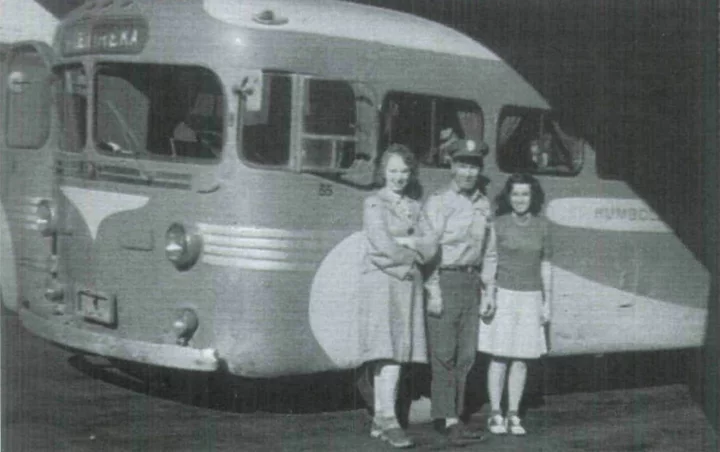GROWING OLD UNGRACEFULLY: I’m Confused!
Barry Evans / Sunday, April 14, 2024 @ 7 a.m. / Growing Old Ungracefully
Anyone who does their own taxes knows about confusion. Just trying to figure out which forms to fill out in the first place practically requires an MBA, while the calculations themselves require an advanced degree in math. (The current US tax code is over 70,000 pages long.) To paraphrase Herbert Morrison, who witnessed the fiery end of the Hindenberg in 1937, Oh the insanity!
Which got me thinking about other areas of confusion, large and small, that bedevil our lives.
Units, SI vs. US
The Mars Climate Orbiter, launched by NASA in December 1998, was lost the following September during the course correction designed to take it into a Mars-orbiting trajectory — it either burned up in the atmosphere or entered an orbit around the sun, missing the planet entirely. The error that resulted in the loss of the half-billion-dollar (in today’s money) spacecraft was that, while Lockheed Martin used the usual US units (pound-force), NASA used SI (metric) units, newton-seconds, meaning that instructions sent to Mars Climate Orbiter were off by a factor of 4.45.
The $600 million (in today’s dollars) Mars Climate Orbiter, lost on September 23, 1999 due to a metric conversion error. (NASA)
Next
“Today’s Sunday. I’ll see you next Thursday,” you tell me.
“Wait, do you mean four days from now or eleven days from now.”
“I said next,” you reply. “If I meant this Thursday, I’d have said so.”
(Try explaining that to a new immigrant in an ESL class.)
13/30, 14/40, 15/50…
“Do you realize that at least fifty percent of ESL students have trouble differentiating thirteen from thirty when they hear it?”
“You’re kidding. That’s funny.”
“Funny peculiar or funny ha-ha?”
Biweekly
I hate this one, and still have to check every time someone uses the word. (Ditto bimonthly and biannual.) According to Merriam-Webster, biweekly means both:
1: occurring, done, or produced every two weeks
2: occurring, done or produced twice a week
A commentary by the M-W editors notes, “The problem lies in the prefix bi-: it means (among other things) both ‘coming or occurring every two,’ and ‘coming or occurring two times.’ This too is a long-established fact that we cannot ignore. English is sometimes simply obstreperous.”
Glad we got that cleared up.
Time Change
I hate time change. You too, I’m guessing. Not just for screwing up biorhythms (there’s always a spike in traffic accidents twice a year) but for mundane stuff like Amtrak; every October, any Amtrak train running on time stops at 2:00 a.m. and waits an hour before getting underway again, so as not to mess up the schedule. Sigh. Airplane crews use Zulu/UTC time — which, if adopted by the USA, would eliminate so much confusion.
This mess would be gone if we all adopted Zulu time! (Public domain)
Days and Dates
Being a limey from Britain, my instinct is to write my birthday as 6/9/1942, that is, day/month/year, as is done in the UK, along with Europe, Mexico and nearly all the rest of the world. Here, of course, I have to invert the day and month (for 9/6/42) — in this the US is unique. Almost. In Canada and South Africa, there’s no official standard and you can go either way.
(By the way, the sun was firmly in the constellation Leo when I was born, so how come my sun sign is Virgo? Because of the precession of Earth’s axis since the Babylonians originally settled on 12 signs of the zodiac 5,000 years ago.)
Noon and Midnight
11:59 a.m. is one minute before noon, so why isn’t 12:00 a.m. noon? Actually, it is in Japan. And was, in this country; the style manual of the US Government Printing Office ordained 12 a.m. for noon until 2008!
I’m too confused to keep going. Time for one of my bi-hourly breaks.
BOOKED
Yesterday: 5 felonies, 16 misdemeanors, 0 infractions
JUDGED
Humboldt County Superior Court Calendar: Today
CHP REPORTS
No current incidents
ELSEWHERE
RHBB: Risk of Sneaker Waves Expected Thursday Along Northwest California Beaches, Says NWS
RHBB: Motorcyclist Injured in Collision in Eureka; Roadway Temporarily Shut Down
Governor’s Office: Governor Newsom Proclaims State of Emergency in Mono County for Pack Fire
County of Humboldt Meetings: Forestry Review Committee Agenda on Monday, December 15, 2025 at 1:00 pm
Because People Get Their News in Facebook Comment Sections, City of Eureka Issues Press Release Stating Sequoia Park Zoo Is Not Closing and Never Was
LoCO Staff / Saturday, April 13, 2024 @ 5:14 p.m. / Local Government
The City of Eureka has operated the Sequoia Park Zoo since 1907 and it will continue to do so for the foreseeable future. Image: Sequoia Park Zoo Foundation
###
PREVIOUSLY:
###
Press release from the City of Eureka:
Eureka, CA – The City of Eureka acknowledges the Sequoia Park Zoo Foundation’s recent decision to dissolve their operations as a 501 (c) (3) non-profit fundraising organization and is very grateful to the Sequoia Park Zoo Foundation for their many years of philanthropic support.
The City of Eureka and Sequoia Park Zoo wishes to reassure the community that the Foundation’s decision will not impact animal care, guest access, operations, or staffing.
“We will continue to meet and exceed the highest standards of animal wellbeing while providing guests with experiences that create and deepen connections to wildlife and wild places,” says Jim Campbell-Spickler, Sequoia Park Zoo Director. “We have seen record-breaking growth over the past few years, and I am excited for what the future holds for our little zoo in the redwoods.”
The City of Eureka has owned, operated, staffed and made all capital improvements to the Sequoia Park Zoo since it opened in 1907, and the Zoo has been proudly accredited by the Association of Zoos and Aquariums (AZA) for over 25 years.
“The City remains committed to preserving and promoting the unique history and mission of the Sequoia Park Zoo,” says Donna Wood, Director of Community Services for the City of Eureka. “We look forward to continuing to shepherd the success of the Zoo in collaboration with our community partners.”
Anyone wishing to stay connected or learn more about the future of the Sequoia Park Zoo may visit www.redwoodzoo.org.
HUMBOLDT HISTORY: Studying and Not Studying at Humboldt State During the Second World War, When Young Women Made Up Most All of the Student Body
Naida Olsen Gipson / Saturday, April 13, 2024 @ 7:30 a.m. / History
Left to right: Priscilla Shepherd, Marian Connick, Naida Olsen, Tiny Lindgren, Marianne Jensen, Lola Austin, Violet Lund, Maryellen Keating, Jessie MacMülan, Lois Carlson, and Wilda Lindgren. Photos via the Humboldt Historian.
A few days before Christmas 1944, after months of stomach problems, my father died of cancer. My mother, my two sisters, and I were devastated. We came home from the funeral to a house empty without him.
I had celebrated my seventeenth birthday less than a month before he died. One would think that with a war on. 1 would have been independent and worldly, but that was not the case. I missed my father and worried about how my mother would manage without him. 1 was shy and myopic; not part of the “in” crowd at high school. I graduated from Eureka High School in January 1945, and I did not know what to do with myself after graduation. Mother suggested I enroll at Humboldt State College. With most of the young men still fighting in World War II, about 145 of the 159 students enrolled at HSC were girls. The rest were boys under the age of 18, men not eligible for the draft, and one or two men over 65.
I knew of only one family member who had graduated from college — my mother’s younger sister, Sadie Phillips. Later. I learned that two cousins on my father’s side of the family, Anita and Ruth Shaw, had also attended Humboldt State.
Perhaps mother let me take the car that day, a 1941 olive-green Ford Deluxe sedan. I found the school, where arena registration for the spring semester of 1945 was in progress. I muddled through and paid the fees, my ears ringing with the echoes of voices, footsteps and dropped books in the poor acoustics of the gym.
Nearly all of the classes were held in Founder’s Hall. But some classes for prospective teachers were held down the hill in the College Elementary School, where student teachers taught under the guidance of supervising teachers. The gym was behind Founder’s Hall. Nelson Hall, a co-ed dorm with one wing for girls and one for boys, stood below the parking lot.
Most of my classes were easy to find. English 101 and Speech 101, both taught by John Van Duzer, were on the second floor at the south end of Founder’s Hall. World History was in a lecture hall tucked away behind the auditorium on the ground floor, north. Health class on the second floor overlooked the front entrance of the building. The rule that class was canceled if an instructor was fifteen minutes late pleased us all, and the Health teacher was usually late. We sat poised, ready to leave, as the clocked slowly ticked to the quarter hour. The women’s lounge, a “girls only” sanctuary, was a place to go between classes to study, eat lunch, talk, or smoke - but none of my friends or I smoked. No boys allowed - even if there had been any.
At the south end of Founder’s Hall was a wooden structure, flanked by a wooden sidewalk. This building housed industrial arts and crafts — woodworking and pottery — the domain of Horace “Pop” Jenkins, who seemed frail and elderly to me then, and who must have been there when the college first opened its doors in 1913. Everyone, students and faculty alike, called him Pop.
Across a patch of worn grass and another wooden sidewalk, a second wooden building housed the Student Union and Book Store — the Co-op. A soda fountain ran down the center of the Student Union, where a scoop of ice cream was a nickel, and a squirt of chocolate syrup, one cent. I longed for one of those chocolate sundaes, but 1 didn’t have six cents to spare, and felt I could not ask my mother, so recently a widow, for extra money.
At Humboldt, I felt I had arrived where I belonged, no longer on the outside looking in. I made friends with a large group of girls, all of whom lived at home and commuted to school. Some had cars and others rode the bus — the Humboldt Motor Stage. The bus company ran one bus, a “modern,”snub-nosed vehicle driven by Ralph Mackie all the way from Fortuna; this bus reached the campus at 9 a.m., too late for eight o’clock classes.
The bus I rode left Eureka at 7:30 and reached the college by 8:00 a.m. I had to get up at six, dress, cook a little oatmeal for my breakfast, pack a lunch, and make sure I had my bus pass, which cost five dollars for one month. I walked four blocks in the dark from my house to the corner of Harris and E Streets and waited with a few other students by the big wooden water tanks for the bus.
The Humboldt Motor Stages bus from Fortuna, at the Greyhound station in Eureka on 4th Street. Left to right: Naida Bartlett, wearing her “Dutch girl” shoes: the bus driver. Ralph Mackie; and another student, possibly Pod Gushaw.
The old bus finally got there, limping along on what were probably worn retreads. New tires were not available for civilians in early 1945. The dim glow of its parking lights, the only vehicle lights allowed at night during wartime, barely penetrated the gloom as the bus poked its long hood out into the morning mists. The driver, a college student, drove with care, aware that his ancient chariot had to last until the war ended. Brakes screeched as the bus stopped. The door swung open. I stepped into the murky gloom and found a seat. A musty odor permeated the interior, as though it hadn’t been cleaned for some time. A few students studied by the feeble glow of small lights recessed above the windows. Others dozed as the bus ratcheted down E Street. We made a few more stops before heading east on Fourth, a two-way street then, and part of Highway 101.
The asthmatic bus wheezed out of town, over the drawbridge at the slough, and along Highway 101, past what were stinking mudflats a low tide or wetlands at high tide, past the small airport at Murray Field, and the eucalyptus windbreak edging the bay. We hit the legal speed limit of about thirty-five miles an hour by the time we entered Branard’s Cut, a high cliff of red-ochre dirt carved with the initials of dare-devils who had had to hang over the edge or climb up the side by sculpting hand- and footholds.
A diner, Ma’s Hamburgers, nestled at the base of the cliff. A dirt road wound up the back of the cliff and led to a lovers’ lane at the top. but I didn’t know about this until years later when my future husband, Ken Gipson, took me there to study the stars.
The sun broke over Fickle Hill and threw a rosy glow across the duck blinds on pilings in the tidewater. We passed the Samoa Road and the Red Robin Café, and entered Arcata. The driver down-shifted as we headed up the hill by Safeway, the Bank of America, and the Ford garage. He shifted again, and we passed the plaza with the Varsity Sweet Shop in the middle of the block on the right, and the Arcata Union print shop on the corner. The Hotel Arcata was across from the plaza’s northeast corner; Brizard’s Department Store, across from the southeast corner; and a statue of President McKinley in the center of the square. Another hill loomed; another downshift - gears grinding. We got a running start past the bakery and turned up Humboldt Hill. When the bus lugged down, the driver shifted to the lowest gear, and we crawled up the grade to the college, the engine complaining all the way. The old bus came to a stop in front of the steps to Founder’s Hail beside a bench donated by the class of 1933.
Among my new friends was one old friend from Eureka High, Lola Austin (Larson). She and Maryellen Keating (Householter) took pre-med and both went to St. Mary’s nurses training school in San Francisco and later had successful careers as nurses.
New friends included Wilda and Tiny Lindgren,who drove to school every day from Trinidad; Géraldine Stanbury. a red-headed girl we nicknamed “Pinky,” who had her own car; and Louise Meeks, Jessie MacDonald, Priscilla Shepherd. Naomi Schmidt. Marianne Jensen (Schroeder) known as “Toodie,” and a girl named Gladys we teasingly called “Happy Bottom.” Lois Carlson majored in education and eventually became a supervising teacher at the College Elementary School. Vicki Short (Hartman), who had enrolled at Humboldt State when she was only fourteen, later taught at Lincoln and Marshall schools in Eureka. Marian Connick taught in Stockton. Violet Lund (Oppenheimer) taught in Sun River, Oregon. And I discovered another Naida - Naida Bartlett. Naida B. and Naida O.
Naida B. wore wooden-soled “Dutch girl” shoes, and wrote with a fountain pen in brown ink. I’d never known anyone with my name before, nor anyone who wrote with anything other than blue ink. We became best friends. Naida and I decided to become kindergarten-primary teachers. She later taught in Rohnerville, and I eventually taught at McKinleyville, Whitethorn Valley and Rolph School in Fairhaven and substituted at the Samoa School.

The author in the spring of 1945, on her way to class at Humboldt State College with her Brownie box camera.
Fred Telonicher taught zoology in the lab at the back of Founder’s Hall. Jars of specimens pickled in formaldehyde sat on top of the cupboards. For a girl who had been raised on the perimeter of the Victorian era, when girls were not told the facts of life, zoology was a scary revelation.
The major project was the dissection of frogs — huge frogs, not little green tree frogs. My frog was sixteen inches long with a fat tummy, and it was stiff and stinking from the formaldehyde that wrinkled the skin on my fingers. I picked up the scalpel, turned my face away, took a deep breath, held it. turned back, and cut. Tiny black and white dots popped out. I had no idea what they were. I looked at Lola’s and Maryellen’s frogs. They did not have black and white dots.
Mr. Telonicher walked through the lab. and 1 asked him what the dots were. He gazed at me for a moment and said “Eggs.” Then he moved to another table where. I assume, he expected to get more intelligent questions. Eggs. Oh. Well, that would explain why my frog was so fat. It didn’t explain why I was so ignorant of life.
Our young, dedicated P.E. teacher told us to interpret the music for modern dance with long, filmy scarves, waving them around, and dancing to whatever the music made us feel. We ran back and forth across the gym, our scarves floating in the air. Since the age of five I had learned precise dance steps and routines. I was too inhibited to modern dance.
I will never forget the librarian, Helen Everett. Mrs. Everett spoke in a soft voice as she introduced the children’s literature class to A.A. Milne’s Winnie-ihe-Pooh. I can’t thank her enough. To this day, Winnie-the-Pooh and The House at Pooh Corner remain my all-time favorite children’s books.
Stella Little taught arts and crafts: water color painting, knitting, basketry. These credits went toward a minor in art. Mrs. Little’s classroom was one of the light, airy, second-story front-facing rooms in Founder’s Hall.
Because a few girls had cars, we had some mobility, as long as we could get rationed gas. We didn’t go far: Mad River, up the coast to Luffenholtz Beach, and. once in a while, if we had any money, to the Varsity on the plaza for ice cream.
I had such a good time at Humboldt that I became one of the rare third-semester freshmen. Cutting speech class whenever it was my turn to give a speech was not the smartest thing to do. A lot of students cut health class, especially in nice weather. My friends and 1 would take our triangular first-aid bandages from class and our sack lunches, and go up Mad River to swim under the railroad trestle. Triangular bandage swimsuits covered more bare skin than today’s bikinis. Even so, in 1945. they were quite daring — rather shocking, in fact, as they were nearly transparent when wet. Fortunately. there were no boys around. We’d have simply died if anyone had seen us in our makeshift swimsuits.
The war ended in August of 1945. No more worrying about a telegram announcing the death of a loved one. No more gold stars in the front windows. No more gas rationing. No more shoe or butter or meat rationing. Our service men and women were coming home. We could settle down to a normal, happy life.
Or so we thought. We had no inkling of the explosion that was about to take place in our small “girls’” school. The G.I. Bill of Rights would change our school, and our lives, forever.
###
The story above was originally printed in the Fall 2004 issue of the Humboldt Historian, a journal of the Humboldt County Historical Society. It is reprinted here with permission. The Humboldt County Historical Society is a nonprofit organization devoted to archiving, preserving and sharing Humboldt County’s rich history. You can become a member and receive a year’s worth of new issues of The Humboldt Historian at this link.
OBITUARY: Pamela Ann Lundblade, 1945-2024
LoCO Staff / Saturday, April 13, 2024 @ 6:56 a.m. / Obits
Pamela Ann Lundblade, a lifelong resident of Humboldt County, passed away April 6, 2024, after a brief and courageous battle with liver cancer.
She was 78 years old.
Pam was born in Eureka on October 12, 1945 to Graham and Velma Henderson. She attended local schools, graduating as part of the Class of 1964 from Eureka Senior High School.
From an early age, Pam fell in love with horses. She was an avid equestrian, member of the American Quarter Horse Association and left an extensive collection of ribbons and trophies she won, locally, while showing her geldings, Reb and Mac.
During the years she boarded horses at Redwood Acres Fairgrounds, Pam made many lifelong friendships and shared memories. She especially enjoyed mentoring younger riders and encouraging their unique gifts and talents.
Later in life, Pam loved to travel and was able to do so extensively. She particularly enjoyed traveling by cruise ships that allowed her to visit countless countries, including her dream trip to Normandy, France in 2019.
She is survived by her husband Fred Lundblade, brother Donald Henderson (Cindy), daughters Julie Farr and Jennifer Rudick (Darin) as well as grandsons Layne Christopher and Bryce Julien.
A celebration of life is being planned; details will be forthcoming.
Her family would like to thank the group of close friends that were by her side in her final weeks. Friendships that spanned decades were close to her heart and we thank you from the bottom of ours.
We would also like to thank the following:
- Eureka/Humboldt Hill, paramedics and firemen
- Saint Joseph’s/Providence Hospital Emergency doctors and staff.
- Saint Joseph’s/Providence PCU floor, doctors and nursing team. MedSurg floor, doctors and nursing team.
- Timber Ridge Assisted Living. Thank you to the nurses and staff who were incredibly diligent and kind in Pam’s final days. A very special thank you to Larona Farnum.
- Thank you, Hospice of Humboldt, for your loving care in every sense of the word.
- Dr. Erin Nelli and her assistant, Dan. Pam adored her healthcare team and appreciated their willingness to spend time discussing her disease and answering questions at a moments notice.
In lieu of flowers, please make donations to your favorite area charity.
Finally, enjoy a meal with those you love.
Pam would often be seen, at various local restaurants, having lunch with her girlfriends. Take a friend to lunch today, in her honor.
###
The obituary above was submitted on behalf of Pam Lundblade’s loved ones. The Lost Coast Outpost runs obituaries of Humboldt County residents at no charge. See guidelines here.
Seven Years Later, Arcata Police Hope That More Witnesses to the Killing of David Josiah Lawson Will Come Forward
LoCO Staff / Friday, April 12, 2024 @ 4:40 p.m. / Crime
David Josiah Lawson. File photo.
Press release from the Arcata Police Department:
On April 15, 2017, seven years ago this week, Humboldt State University sophomore student David Josiah Lawson was stabbed to death while attending a house party on Spear Avenue in Arcata. The Arcata Police Department continues to investigate this open murder case. Investigators continue to actively pursue leads and a 24-hour tip line remains open whereby information from confidential sources can be provided to APD investigators.
Witness accounts are essential to moving this case forward either by corroborating known information or in the development of new leads. Investigators are hopeful, that with the passage of time, witnesses that might have been reluctant in the past, might be willing to come forward now. It is imperative that those witnesses contact investigators to move this case forward.
Anyone with information regarding the murder of Josiah Lawson is asked to call the Arcata Police Department’s confidential tip line at (707) 825-2590 or APD Dispatch at (707) 822-2424. Eyewitness accounts of what led up to, and including the murder of Josiah are crucial to bringing this case back to court.
[UPDATE: Opens Friday] Reviews are In for the Entirely Humboldt-Filmed Bigfoot Family Drama Sasquatch Sunset
Ryan Burns / Friday, April 12, 2024 @ 4:33 p.m. / MOVIED!
UPDATE, April 17, 9:45 a.m.:
A representative of Bleeker Street, the independent film company that produced Sasquatch Sunset, emailed the Outpost to let us know that the movie starts Friday at the Broadway Cinemas in Eureka.
###
Original post:
Ready for the Arcata Plaza drum circle.
###
###
The good news: Today is opening day for Sasquatch Sunset, a new feature film that follows a family of the famously reclusive cryptids. It was filmed entirely here in Humboldt County’s own redwood forests! It stars Jesse Eisenberg and Riley Keough, unrecognizable in full-body fur suits!
The bad news: It’s not showing at any of our local theaters — not yet, anyway. We assume the movie will eventually find its way to one or more of our local theaters, but until then we’re left to skim critic reviews.
The consensus? Sounds like this thing is pretty good! Directed by brothers David and Nathan Zellner, the R-rated faux nature documentary reportedly features lots of gross body humor, including graphic Bigfoot sex and copious poop-throwing. But reviewers also describe the film as “poignant,” with L.A. Times critic Amy Nicholson saying, “it holds up a mirror to our own narcissism.”
In a rave review for the New Yorker, Richard Brody says the “scruffy but finely nuanced drama … depicts a wide spectrum of Sasquatch life” and, in doing so, contains “many psychologically resonant moments.”
Not every critic has been so taken with the movie, though. In Paste, for example, Felicia Reich takes issue with how the brothers Zellner portray the lone female member of the Sasquatch family, who’s often made to carry “the universal burden of womanhood that spans species.”
“The pain and distress of the film often comes at the expense of our heroine … ,” Reich observes, “and considering the agony her brothers and deadbeat father put her through, a single instance of righteous indignation just wasn’t enough for me. I was left with a thirst for vengeance that was never quite sated.”
Most reviews are positive, though. (The movie is currently carrying a 79 percent “Tomatometer” score on review aggregator website Rotten Tomatoes.) The San Francisco Chronicle’s longtime reviewer Mick LaSalle opines, “It’s a special movie that can make you laugh out loud numerous times at gross comedy and then make you think and feel something, too.”
Earlier this week, the Chronicle’s Datebook also published a behind-the-scenes report on the making of the movie, which includes descriptions of the full-body foam latex hair suits worn by actors and their flexible masks, which were thin enough to allow facial expressions.
In the Datebook story the Zellners address the challenges and importance of filming here in our neck of the woods:
While Eureka and Arcata were their base hubs, David Zellner said “we went pretty much in every direction” to film on private land as well as state and national park locales. “It’s one of the most beautiful places on Earth, and we really wanted the film to have epic landscapes,” he said over Zoom with his brother from New York. “From the start we knew we wanted to shoot in those primordial, old-growth redwood forests.”
Still, “it was very difficult,” David confirmed. “That’s why not many people shoot up there. It’s hard to get to, and to get on location. Just navigating the woods is a challenge on its own, but then you’re adding a whole crew, people in costume, makeup effects and those sort of things. But that was important because we really wanted to ground this world we’re creating with a sense of naturalism. That’s why we didn’t want to shoot on a soundstage.”
Still not sure whether this one’s for you? Watch the preview below to get a better sense of the whole vibe.
The Sequoia Park Zoo Foundation Announces That it is Dissolving; City of Eureka to Take Over Fundraising Duties, Press Release Says
LoCO Staff / Friday, April 12, 2024 @ 3:17 p.m. / Local Government
SPZF accomplishments.
Press release from the Sequoia Park Zoo Foundation:
The Sequoia Park Zoo Foundation (SPZF) is a 501(c)(3) established in 2004 and is the philanthropic, nonprofit partner that has proudly supported the City of Eureka’s Sequoia Park Zoo for over 20 years. In two decades SPZF cultivated over 26,000 donors and innovative partnerships, and inspired collaborative community engagement through fundraising, promotions and events. SPZF has raised nearly $15 million since its inception and has been successful in securing and organizing funding for many capital projects to enhance the zoo experience including:
- 2004: Barnyard and Contact Corral
- 2005: The Arkley Pavillion
- 2007: Bill’s Garden
- 2008: Hilfiker Aviary Renovation
- 2010: The Red Panda and Muntjak Habitat
- 2011: Flamingos, Cavies, and Screamers Habitats
- 2014: Watershed Heroes Project
- 2016: McClean Raptor Aviary
- 2017: Lamoree Learning Lab
- 2019: Vintage Snack Cart Renovation
- 2020: The Redwood Sky Walk
- 2022/23: The Bear and Coyote Habitat
It is with a heavy heart that the Sequoia Park Zoo Foundation announces the end of an era in its decision to dissolve the organization in the coming months.
Over the last several years, the Sequoia Park Zoo has grown and changed to become the premier community and tourist destination SPZF intended when the organization formed as the philanthropic partner to the City of Eureka. With the launch of world-class interpretive experiences such as the Watershed Heroes Project, the Redwood Sky Walk and the new Bear and Coyote Habitat, the zoo has seen —and continues to see— record attendance with visitors from all over the world. The City of Eureka reports over $2.6 million in zoo revenue in 2023 alone. It is this positive and successful growth and development of our neighborhood zoo nestled in the redwoods that has piqued interest from the City of Eureka to assume greater responsibility for ongoing fundraising, membership, promotions, marketing and events at the zoo. SPZF has decided to gracefully pass the baton.
Over the coming months, SPZF will map out the strategic sunsetting of the organization by drafting its plan for dissolution, articulating how remaining assets will be distributed and specifying how remaining liabilities will be addressed. SPZF is committed to ensuring that our community’s generous donations are directed toward the projects for which those funds were given. You may follow updates regarding the dissolution process at www.spzfoundation.org and in SPZF’s eChatter Newsletter.
The Sequoia Park Zoo Foundation’s impact at Sequoia Park Zoo was and continues to be the successful legacy of all of our esteemed stakeholders, community leaders, partners, donors, board members, patrons and volunteers. It has been a privilege to support the zoo in becoming the international attraction it is today, working alongside those devoting time, talent, and funds over two decades.
PREVIOUSLY:










